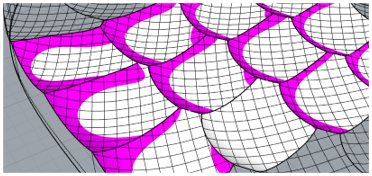Design And Design for Manufacturing
-
Offering type ?
PRODUCT:
Component or system, which is commercialized. It is available for ordering multiple pieces and liability is assumed by the provider/seller. Necessary certification of the product was obtained (e.g. CE certification). The product sheet and/or conditions of use are defined.
PROTOTYPE:
Component or system, which has been successfully tested under real or real-like conditions. The prototype is not commercialized as the main purpose is to use it for demonstration and experimentation, including user and market acceptance.
TECHNICAL SERVICE:
Tools and processes and its combination, which are necessary to prepare and test prototypes or products.
- Optical design and simulations
- Design check for manufacturability
- Service
-
Market
- AR/VR/MR
- Automotive
- Consumer Products
- Decoration & Luxury
- Healthcare & Life Sciences
- Imagers & Displays
- Lighting
-
Manufacturing Pillar
- Wafer-scale
-
Technology
- OTHER
Organisation
Offering Description
What is Optical Simulation?
Optical simulations are used by engineers and scientists to predict the propagation and the behaviour of electromagnetic waves in the optical spectral regions ranging from ultraviolet (UV) to Visible (Vis) up to infrared (IR).. Equally referred to as optical modelling, the goal in most optical simulations is to determine how light interacts with matter and to derive actionable information from that data. This basic principle applies to complex light-based simulations across the full spectrum of optics research and development (R&D).
Optical Design Engineering: The Basics
Optical engineers are used to develop a wide range of optical components and devices up to systems that may utilise and combine several optical technologies. Realising these complex systems demands a precise understanding of how light of different wavelengths propagates and behaves in the different end-use scenarios.
Depending on the treated problem, optical designers can simplify calculations by treating light as rays rather than waves or particles (i.e. photons). The resolution of complex differential equations, the Maxwell equations, is needed in the wave approach. Particle physics predominates in applications where quantum effects impact performance, whereas ray optics is more common in optical design, where engineers normalise the direction of an advancing wavefront into a line.
Case Study: Freeform Optics for Uniform Illumination
Traditional optical surfaces are either spherical or aspherical with rotational symmetry. Freeform optics eschew this conventional design methodology with surfaces lacking in rotational symmetry. Freeform optical components are valuable due to their potential for distributing light with exceptional design flexibility and excellent precision, given the fact that their surface can be optimised for virtually any incident ray. As an example, non-symmetric shapes can be optimised for uniform illumination that is impossible using standard axially invariant components. Such freeform optical components are a crucial tool to engineer innovative illumination solutions e.g. to create brighter, more stimulating working environments.
This use case is only one among innumerable examples, where optical modelling can enable the tailoring of new lighting solutions for illumination, imaging, etc. In this particular case, optical simulations can enable engineers to predict both the horizontal and vertical illuminance distributions of light sources equipped with freeform lenses, by defining the collection of emitting points and then ray-tracing the illuminance distribution.
Looking for Optical Simulation Services?
At CSEM, we offer optical simulation and modelling services that assist optical engineers with various design protocols. Our expertise covers an extensive portfolio of modelling methods well adapted to a wealth of different application cases. Contact us today if you would like to learn more. Or browse our technology development services page for more information on how we could assist you.
Offering Specifications
Design softwares:
- Zemax / LightTools / LightTrans
- SolidWorks / AutoCAD / AutoDesk / Rhinoceros / Grasshoppers
- Matlab / GDCalc
- OmniSim
- CleWin / Klayout
Design output:
- Designs
- Designs with tolerancing
- Design tools for manufacturing and manufacturability check


